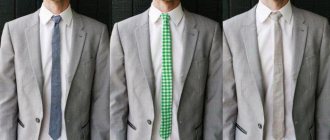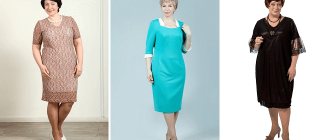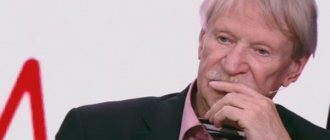In the high stakes of politics and business, there are only two colors that eloquently support connections with the outside world. It's red and blue. Of course, when going to the office, you can wear a combination tie, or take some liberties with yellow or purple. If you are dealing with important partners, deviations from formalities may cause some alienation and misunderstanding. Take a look at the world leaders holding their next summit. It is unlikely that you will find a colorful variety of colors in their costumes. And only ties will certainly be red or blue. What is the reason for the preference for influential people?
Interesting detail
For his inauguration, current US President Donald Trump chose a dark suit and a red tie, while his predecessor Barack Obama opted for a blue accessory. Their wives did exactly the opposite when choosing the color scheme of the suit. Michelle Obama appeared before the public in a red dress, and Melania Trump chose a pale blue ensemble for the ceremony.

Cucumbers, zucchini and radishes: which vegetables can be harvested twice per season
Draco Malfoy and others: which negative movie characters eat apples and why
Sia “butted heads” with Nicki Minaj and Cardi B, and later apologized
During the first presidential debate in fall 2016, then-Republican nominee Donald Trump wore a blue tie. His opponent Hillary Clinton chose a bright red suit. The Democrats probably decided to rely on the color of love and nobility. Their vice presidential candidate Tim Kaine wore a red tie for his portion of the debate on October 4th. You'll be surprised, but the current president's running mate, then-Indiana Governor Mike Pence, sported a blue tie to voters.
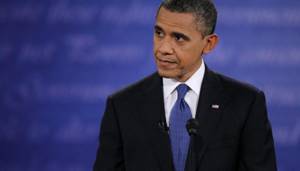
Story
Initially, the program was released as a weekly supplement to “Hero of the Day,” but since 2001 it began to appear as a separate program. The period of existence of the program can be divided into three parts: the first - “Hero of the day without a tie” (NTV, 1996-2001), the second - “Without a tie” (TV-6 and TVS, 2001-2003), the third - “Without a tie” (“Russia” and “Russia-24”, 2003-2013)[7].
“Hero of the Day without a Tie” (NTV, 1996-2001)
The idea of creating the program arose in 1996, when Irina Zaitseva made 15-minute reports for Itogi dedicated to the wives of Russian presidential candidates[8]. The first heroine was Naina Yeltsina - Zaitseva spent a very long time negotiating the filming with her[8]. The next report by Irina Zaitseva was dedicated to Viktor Chernomyrdin[8] and was shown as part of the “Hero of the Day” program on October 28, 1996. Soon the presenter had the idea to start making a separate program about male politicians.
The first release of the program took place on NTV on November 16, 1996. The program opened with a short introductory story by the presenter about today's “hero of the day without a tie” in the television studio. On NTV, the presenter's stand-ups were always recorded in the "sand" studio of "Hero of the Day", and on TV-6 (TVS) - first in an improvised studio deployed in a room with red walls, then - in the scenery of the 5th studio of Ostankino, from where Almost all of the channel's programs were aired. The program itself is also accompanied by stories and comments from the presenter and information from the biography of the program participant[9].
An interview with the hero of the day without a tie was most often recorded over several hours, despite the fact that the program itself lasted only 26 minutes. The presenter never met with her characters in advance and did not discuss anything with them when the camera was turned off[10]. And if, during editing, a participant in the program asked not to include something from what was said in the finished version of the recording, the presenter always met the wishes of the participant and omitted unnecessary footage. The program ended with the same phrase: “You watched the program “Hero of the Day Without a Tie.” Today we were visiting ***. Watch us every Saturday at 19:30 on the NTV channel” (time and channel name may vary depending on the broadcaster)[11]. From 1997 to July 29, 2004, the program ended with the demonstration of credits indicating the film crew.
In the first two seasons, the geography of filming was limited to Moscow and the Moscow region[11]. In the fall of 1998, the first on-site episode of the program was recorded in Paris. His hero was Anatoly Sobchak, who left for France when a criminal case was opened against him in Russia[11]. Off-site graduations of the program began to be practiced in the future. Their heroes at different times were Mikhail and Raisa Gorbachev, Boris Berezovsky, Eduard Shevardnadze, Nursultan Nazarbayev, Alexander Lukashenko, Viktor Yushchenko, Yulia Timoshenko, the Klitschko brothers[12] and others.
In June 1999, the final digest program was released before the summer holidays, made in an ironic tone[13][14]. After this, it was assumed that in the fall the program would not return from summer vacation[14] and would be replaced by the “One Day” program with Kirill Nabutov. But this information subsequently did not find any confirmation, and in September 1999 the program continued to exist in its usual format[15]. True, now the scope of possible heroes of the program has expanded (in three years, Zaitseva managed to film almost all prominent Russian politicians “without a tie”), and the presenter began to interview cultural and sports stars much more often[16].
The last episode on NTV took place on March 24, 2001 - the “hero of the day without a tie” was conductor Vladimir Spivakov[17]. After the takeover of NTV on April 14, 2001, nothing was known about the future fate of the program for a long time due to health problems that arose with the presenter[18]. Some assumed that the program would remain on the new NTV under the leadership of Boris Jordan, while others believed that the program would leave along with Evgeny Kiselyov and the main staff of NTV[19]. The latter turned out to be right[20].
“Without a tie” (TV-6 and TVS, 2001-2003)
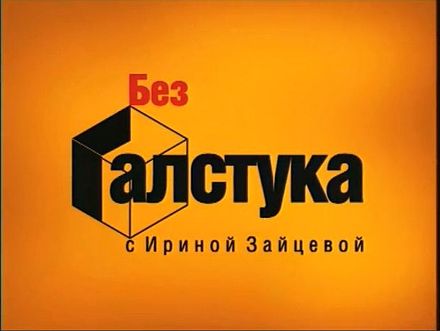
On September 16, 2001, the program resumed its broadcast on the TV-6 channel[21] with a new screensaver and a new name - “Without a Tie.” After the program left NTV, the first part of the name was discarded - the main version of the program remained on NTV, and the channel itself registered the name “Hero of the Day” in its own name[22]. The title "No Tie" was used from September 16, 2001 to June 15, 2013. On TV-6, “No Tie” was first broadcast on Sunday evenings, immediately after the “Itogi” program, and then on weekday evenings, with a repeat the next day (or a few days after the premiere) in the daytime broadcast schedule. The program will continue to air until January 2002, after which TV-6 was taken off the air. In the latest program on TV-6, Anatoly Gorbunov became the hero[23].
After the channel was turned off, the program, like many other programs of Kiselyov’s team from TV-6, was broadcast in a radio version on the radio station “Echo of Moscow”[24]. The first hero of the radio version was Yuri Kobaladze[24].
Since June 2002, Irina Zaitseva’s program continued to exist on television on the new TVS channel under the same name[25][26] and at the same broadcast time (on weekdays in the evening with repeats during the day).
The release of the program will once again be suspended in June 2003 due to the closure of the TVS channel[27]. The last episode of the program on this channel was shown on June 18, 2003, and its participant was the famous football coach Valery Gazzaev, who at that time held the position of head coach of the Russian national football team[28].
“Without a tie” (“Russia” and “Russia-24”, 2003-2013)
After the closure of TVS in June 2003, Irina Zaitseva decided to move her program to the Rossiya TV channel[7]. TV critics o[29]. The first hero of the program on “Russia” was the famous opera singer Dmitry Hvorostovsky. In January 2004, the release with the participation of Chechen President Akhmat Kadyrov caused a wide public outcry[30][31]. The presenter talked with him on various secular topics[32].
It is worth noting that on the Rossiya TV channel the program “Without a Tie” was aired at a later time (on weekdays late in the evening or at night) and on an irregular basis, and after the fall of 2004 its broadcast was stopped[33][34]. In addition, in this version of the program there were no greetings and farewells from Irina Zaitseva to the audience, there was no television studio, as well as introductory stories by the presenter about today’s “hero of the day without a tie” (which were a mandatory part of the program for previous broadcasters), which made the program more documentary .
Irina Zaitseva spoke about this broadcast format like this:
“Each of our programs is practically a mini-movie. In general, it is not customary to let people into private life, and even more so into their own fortress-like home. But for our program they made an exception. And when they invited us to their place, they told us how they built and decorated their homes. In general, they gave us excursions"
[10].
Since July 2006, after the new 24-hour news channel “Vesti” (later “Russia-24”) appeared on Russian television, Irina Zaitseva’s program began airing on this TV channel[35][36]. Several times episodes from this TV channel were shown on the Rossiya channel[37]. The last episode aired on television on June 15, 2013[38]. The reason for the closure is unknown. The last hero of the program was Academician of the Russian Academy of Sciences, hematologist Valery Savchenko.
From the life of the previous administration
Here are some more interesting facts. During his first 11 days as president, Barack Obama alternated between red and blue ties. This politician is famous for his democracy and completely informal view of the dress code. However, even he did not dare to destroy the political formalities that had been developing for decades. Here's what Esquire fashion editor-in-chief Wendell Brown has to say about this: “Washington, D.C. is a strange place when it comes to style. All accents are placed in such a way that a person can fit in perfectly and pass for one.”

Yudashkin's daughter showed her wedding dress, which her father sewed for her
A Russian soldier went to the front and disappeared. After 80 years, my daughter found out what happened
I make a crispy treat from white chocolate and ripe raspberries: recipe
At the 2009 inauguration, Barack Obama and Joe Biden seemed determined to coordinate efforts: “For the gala, both leaders opted for predictable charcoal suits and white shirts. The official clerical style was diluted with two bright spots. When Obama wore a blue tie, Biden appeared before the public in red. The next day they changed the sequence,” says fashion columnist Lisa Irazarry. Apparently, the politicians agreed in advance so as not to duplicate each other’s image.
What does the color of a tie mean?
French astropsychologists have significantly expanded the definition of a man's character by his tie. In their opinion, intelligent, confident men with a fair sense of humor or unusual character traits prefer ties with catchy, flashy patterns with unexpected themes and designs. (I can’t help but remember the provocative ties with bright designs of palm trees, parrots, etc., worn by metropolitan dudes of the 50s and 60s.)
Plain ties are a completely different matter. Gray and black plain ties are most often chosen by “colorless” or “protocol” men (in other words, “office rats” prone to pedantry and bureaucracy). They love order in everything, follow established rules, and are wary of any innovations. They strive to be “correct” in everything, which often simply infuriates their chosen ones.
However, in relationships with women, such men are also most often “correct” and consistent (alas, often to the point of being boring).
What does a tie of a single bright color say about a man’s character? Most likely, it simply indicates a lack of taste. After all, against the background of a light shirt, he is just a blurry spot. Well, if the shirt is darker than the tie, then, according to J. T. Molloy, author of the best-selling book “Dressing for Success,” this option is only suitable for a gangster.
In general, the predominant color of the tie is of considerable importance. Blue indicates reliability and sociability, openness and goodwill. The predominance of bright red color in the pattern of the tie reveals an ambitious and energetic man, striving for power. Dark red color is preferred by confident men. Light green distinguishes the character of men who highly value themselves and place high demands on others. For women who are attracted by the comfort and warmth of the family hearth, astropsychologists advise taking a closer look at the owners of dark green and olive ties.
The fabric from which a men's tie is made also has a certain significance. According to some observations, wool ties are preferred by men who do not really like to burden themselves with work and strict obligations. Sincere men often choose knitted ties.
Let's take a closer look at how the tie is tied. A male leader, a self-confident and energetic person, will prefer a full Windsor knot. A loose knot below the collar eloquently indicates that this person is creative, bohemian, or a person who should not be trusted. However, one does not exclude the other.
PS If a woman believes that by giving a man a matching tie, she will be able to change the character of her chosen one, she will have to disappoint her. A tie reflects a man's character, but does not affect him in any way.
For this reason, one must be very careful when trying to determine a man's character by his tie. After all, very often this toilet detail is received by a man as a gift, and from a woman’s hands.
@
Where did this tradition come from?
Fashion experts say ties have been used by people throughout most of history. At least in that part of it when people began to go out dressed from head to toe. In the Middle Ages, blue was associated with the "blue blood" of the British nobility, while red represented the red blood of the guards.

In other cultures, the color red was associated with love and the heart. These associations are now confirmed by numerous scientific studies. For example, a woman in a red dress is perceived by men as even more desirable. This technique is used by athletes performing at the highest level. They choose red equipment in order to outperform their opponents. It is believed that football players wearing red T-shirts exert some psychological pressure on the referees. This means that in cases where the decision is made at the discretion of the referee, the team in red has a better chance of tipping the scales in their favor.

Candy, eggs and meat: veterinarians have updated the list of harmful foods for dogs
In Iceland they want to open a bar in the lagoon. What it will look like very soon: photo
Correspondence with Zakharov’s wife about compensation from Efremov appeared online
Why men don't like to wear a tie
An integral element of a classic men's suit, a tie, causes not just hostility, but burning hatred in some men. What wrong did a harmless piece of fabric do to the representatives of the stronger sex and why do men not like to wear a tie?
Fans of sports style do not like a suit and a tie for the reason that it deprives them of individuality. Even the most elegant tuxedo will be no different from many thousands of similar models. At an event that requires a strict appearance of those present, everyone looks the same, only occasionally the suits may differ in color and cut.
Many modern companies have a mandatory dress code - shirt, tie, trousers in the summer, and a suit in winter. And no matter how much the opponents of ties mock the poor item of clothing: for some it is a noose that makes breathing difficult and creates discomfort, for others it is a “bib” during lunch to wipe their mouth and mustache, and someone may have a desire to use a tie instead shoe brush. For freedom-loving men, a tie is associated with a collar and a dangling leash. Eating food, especially liquid food, will seem like a disaster for them when the tip of this accessory dips into a plate of food. The inability to tie a tie, which men fundamentally do not want to struggle with, further fuels hatred of this item of clothing.
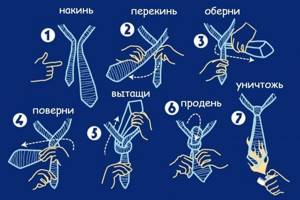
Among young people, a tie is a completely forgotten component of clothing, although scarves and neckerchiefs are quite popular in women's and men's wardrobes. By the way, in the student body, a young man in a suit and tie is now not uncommon, especially in senior years, when it becomes clear to many that it is easier to get an excellent grade in a shirt and tie than in a sports uniform.
No matter how men feel about a tie, in certain situations it is simply necessary: during business meetings, at formal receptions and at work that involves constant communication with clients. We often hear from businessmen who have achieved a lot in life: if you don’t know how to wear a suit and tie, don’t expect to be taken seriously. A young man dressed in a stylish suit exudes confidence, strong character, prosperity, and high status.
Opponents of this accessory should think about whether failure to find a prestigious job is related to a careless appearance? Remember, people are met by their clothes, so at least occasionally do not neglect a business suit and tie, especially since some difficulties can be dealt with.
In order to avoid getting your tie dirty or dipping it into a bowl of soup, the article on how to care for your tie will help, I recommend reading it.
By visiting the page that details 13 ways to tie a tie and bow tie, you will forever be a cure for the inability to tie a tie. In addition, you will find information on how to choose the color or pattern of a tie, how to choose the size of a tie, and how to tie a tie correctly. You can go to the page using this link.
If you don’t know how to choose a tie for a shirt or suit, then I can suggest reading this article to help.
You can get used to a tie, the main thing is to know how to handle it and what benefits it brings in communicating with people around you. Don't be afraid to experiment with a new accessory, and try to convey your attitude and position at a meeting or important meeting with the color and pattern of the tie; at a holiday or party among friends. Sometimes a tie can say more about you than you realize.
How to earn the trust and love of the electorate?
Politicians often resort to all sorts of psychological techniques and tricks. And if there is an opportunity to strengthen your position in the eyes of ordinary people, why not take advantage of this opportunity? But male politicians, unlike their female counterparts, do not have the opportunity to wear bright red suits. But they have learned to perfectly set off dark gray jackets with scarlet ties.

Four-in-hand
View on Instagram
The simplest (and also popular) knot is the Four-in-hand knot - the easiest to learn to tie. It goes with all types of ties, shirts and events, and with just a little practice, it will work even with your eyes closed and with a very bad hangover. This is where you should start your acquaintance with ties. In addition, the asymmetrical Four-in-hand is suitable for those who like slightly careless knots.
This technique adds brightness to the faces of politicians
Here's what columnist Tom Shales wrote during the George W. Bush-John Kerry presidential debate in 2004: “Bush opted for the traditional blue tie, but ditched his favorite hue (blackbird eggshell) for a richer blue. Kerry wore the classic TV version - red. It is believed that a red tie favorably sets off a politician’s face, giving him a healthier appearance.
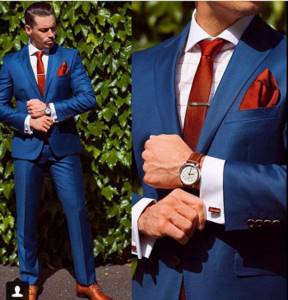
Scientists believe there are dozens of extraterrestrial civilizations in our galaxy
New child support amount and court date. New details of the divorce of Pelageya and Telegin
A parrot sleeps sweetly in a hammock made from a protective mask: amazing video
Notes
- Ganson Andrey Pavlovich. Public Union of Television Workers and Veterans.
- Peskova, Valentina.
Extremist. WomanHit.ru (October 9, 2003). - Archive. Retrieved January 30, 2020. - NTV: results of the heroes of the day. Arguments and facts (October 4, 2000).
- No tie. RAO. Russian Authors' Society.
- Direct speech. Kommersant (July 9, 1997).
- Timur Kizyakov removes the booze from the frame, and Oksana Pushkina moves the furniture. Komsomolskaya Pravda (April 17, 2003).
- ↑ 12
Solovyov goes to NTV, and Zaitseva goes to Rossiya. Komsomolskaya Pravda (June 26, 2003). - ↑ 123
ZAYTSEVA Irina. persona.rin.ru. - Irina ZAYTSEVA and the characteristics of national politicians. Our newspaper (January 30, 2001). Archived from the original on March 4, 2020.
- ↑ 12
No tie. Russia (December 14, 2003). Archived from the original on December 13, 2003. - ↑ 123
French NTV times. Izvestia (October 3, 1998). Archived from the original on March 7, 2020. - No tie. Program releases. Russia (January 7, 2004). Archived January 7, 2004.
- Sergey Fomin. Diary of a TV viewer. Lenta.ru (June 16, 1999).
- ↑ 12
TV between taste and style. The Art of Cinema (September 1, 1999). - Irina Zaitseva prefers politicians. Komsomolskaya Pravda (September 3, 1999). Archived from the original on June 12, 2020.
- Irina Zaitseva: Where are you, new politicians? allabout.ru.
- Journalism. Hero of the day without a tie. NTV.
- Irina Zaitseva was left without “Hero of the Day...”, but with Kiselyov. Komsomolskaya Pravda (June 27, 2001).
- Kara-Murza entered Ostankino through the back door wearing black glasses. Komsomolskaya Pravda (April 17, 2001). Archived from the original on September 10, 2020.
- Evgeny Kiselev will not rename the TV-6 channel. News.tut.by (June 3, 2001).
- WITH A NEW SATELLITE AND NEW PROGRAMS. Pacific Star (August 17, 2001).
- “Razgovorchiki in ranks” instead of “Voice of the People.” TV Criticism (February 22, 2002).
- TV6 will show Gorbunov without a tie. delfi.lv (January 16, 2002).
- ↑ 12
Family secrets of Russian intelligence officers are in Irina Zaitseva’s program “Without a Tie” on “Echo of Moscow”. NEWSru.com (January 31, 2002). - “TV-6” beats its hoof. Shenderovich shaved his beard again. Moskovsky Komsomolets (May 25, 2002).
- New TV-6 will begin broadcasting on May 26. The first will be “Nightingale Night” and “Results” (inaccessible link - history
). Lenta.ru (April 25, 2002). Archived from the original on June 14, 2015. - TV PROGRAM FOR YESTERDAY. A YEAR WITHOUT TVS. Novaya Gazeta (June 24, 2004).
- Without a tie: Valery Gazzaev. TVS (June 17, 2003). Archived June 17, 2003.
- Landscape after the holidays. Izvestia (January 30, 2004).
- Song about the President. Nezavisimaya Gazeta (February 6, 2004).
- Nothing but good. Izvestia (January 30, 2004).
- An uncomfortable topic. Nezavisimaya Gazeta (May 19, 2004).
- THE WIND OF CHANGE IS BLOWING ON TV AGAIN. World of News (August 31, 2004).
- No fanfare. Truth (August 31, 2004).
- “News” non-stop. News Factory. News of the week (February 10, 2008). Archived from the original on March 4, 2020.
- They'll screw you - but don't shine! Interlocutor (September 14, 2010). Archived from the original on September 22, 2020.
- Program “Without a tie” with Metropolitan Kirill (t/k “Russia”). Interfax (September 4, 2012).
- “Without a tie” with Valery Savchenko. Vesti.ru (June 15, 2013).
- Sixth column. hungryshark.ru (January 22, 2014). Archived January 27, 2014.
- Unity and struggle of opposites on NTV. Who is more interesting to us - a man without a tie or a man in a mask? Teacher's newspaper (November 24, 1998).
Separation of "powers"
Another study found that red is the most effective ally when you want to focus attention on specific details. Blue, in turn, is a faithful companion to creative individuals. If we consider the impact on the cognitive functions of the brain, then here too red and blue are “ahead of the rest.” They provide the greatest increase in a person’s thinking ability.

It depends on the nature of the task at hand. Study author and University of British Columbia researcher Juliet Zhu and her colleagues tracked performance on cognitive tasks in 600 volunteers. Some tasks required participants to find a creative solution, while others required attention to detail. Most of the tests were carried out in front of a computer monitor with either a red or blue background. As a result, red was 31 percent more likely to boost performance on domain-specific tasks. Such tests required participants to be able to operate memory functions and proofreading. But when it came to brainstorming and other creative tasks, blue produced twice as much results as its opponent.

What do body windows mean and how to make the right impression?
The windows of the body are located in different places, including the feet (these windows are the most honest), knees, center of the pelvic area, abdomen, heart (upper chest), front of the neck, mouth, eyes and palms. Each opens and closes in different ways, and each sends different types of instant messages.
The window of the heart is exactly what its name suggests in that it allows access to the heart. It serves as the main indicator of how we feel about ourselves and others.
Try an experiment. Cross your hands and place your palms on your heart. Now think about your fears, worries, secrets, anger and sadness. Hold your palms in this place for a little while, as if closing your heart from the outside world. Now put your hands down. Did you feel like you became more vulnerable?
Four tools can be used to open and close the window of the heart: clothing, turning toward or away from the person, physical barriers (books and counters), and hand or shoulder placement.
Clothes can open or close the window of the heart, like a curtain. Compare a woman in a jumper and a woman in a turtleneck. Can you imagine the president coming out to deliver his State of the Union address wearing a T-shirt? By closing or opening the window of the heart with clothes with a high or low neck, a person shows that he is tense or relaxed, secretive or sociable, is about to solve serious issues or is in the mood for informal communication.
The abdominal window is the area between the lower edge of the rib cage and the upper edge of the hips. She is especially vulnerable to attack and is often the target of blows during fights. Hands placed on the stomach indicate a desire to defend ourselves in situations where we are afraid of physical or emotional attack
Pay special attention to situations where people cover or touch their stomachs. Ask yourself what you can do or say to make them feel more comfortable
The neck window is associated with our ego and communication. Have you ever wondered why, even after years of informal dressing, men still wear an incredibly expensive piece of cloth tied in a knot around their neck? From an objective point of view, this looks absurd. However, the tie serves as an exclusive curtain. It indicates the seriousness of the duties performed and indicates the status of the one who wears it. What do men in ties do when they go home after work or have fun with friends? They loosen or remove their ties, exposing their heart and neck windows.
Personality window. Between the windows of the heart and neck is the window of your true self, or the window of personality. Place the fingertips of your right hand at the top of your chest, where your breastbone, or sternum, is located. Behind the breastbone is the thymus, or thymus, gland, which controls the immune system and produces T cells.
When fear, surprise, or confusion makes a person want to disappear, he can use his hand or fingertips to close the personality window. When under stress, people unconsciously touch the part of the sternum where the thymus gland is located.
Be aware of situations in which you cover, rub, or touch the area. Ask yourself what it is about the other person or people, the setting, or the topic being discussed that is causing you stress and what you can do to help yourself and others feel more comfortable
To be continued.
Researchers' opinion
Dr. Zhu says this red phenomenon is not surprising. Take a look around: red on the roadway signals danger, but red ink on a teacher is synonymous with mistakes. To avoid trouble, people increase their vigilance when they see warning signs. Most of us associate blue with the sky, water, peace and tranquility. It is not surprising that the vast majority of the world's population considers it their favorite color.
Found a violation? Report content
Care and storage
In order for a tie to retain its attractive appearance for a long time, you need to follow the rules for storing and caring for this accessory:
- wash and iron your tie only according to the rules on the label; dirt can only be removed with a dry brush;
- do not remove the tie over your head or leave the knot tied;
- place the removed tie on a hanger and let it hang: good fabric will quickly straighten out and return to its original form;
- to smooth the fabric, wrap the tie around your finger, remove the resulting roll and leave it like that for several hours;
- Store ties separately from other items to prevent them from becoming wrinkled.
If you have to spend a lot of time traveling and don’t want to be left without a tie, buy special cases. The fabric in them will not wrinkle or get dirty.
